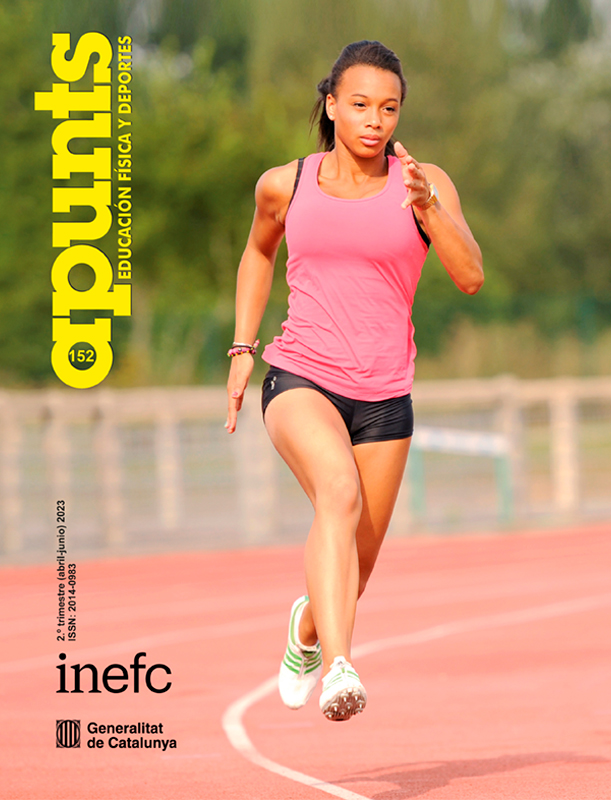Hysteresis Area of Psychobiological Variables. A New Non-Invasive Biomarker of Effort Accumulation?
Article Sidebar

Main Article Content
The hysteresis area, which reflects the history-dependency of psychobiological parameters, has been recently suggested as a new non-invasive marker of exercise stress and tolerance. However, its promising applications are still underexplored. This study aims to test if the hysteresis area of the perceived exertion (RPE), heart rate (HR), and muscle oxyhaemoglobin concentration (muscle O2Hb) are sensitive to effort accumulation over multiple bouts of running exercise. Ten physical education students performed five consecutive running bouts at maximal aerobic velocity. The consecutive bouts started when participants reported at least an RPE ≤ 11 (Borg’s 6-20 scale). The hysteresis areas of RPE, HR, and muscle O2Hb were calculated for each bout, and their magnitude was compared using Friedman ANOVA and Wilcoxon test. Effect sizes were calculated through Cohen’s d. The hysteresis areas of all studied variables changed between the initial and final bouts: RPE and HR increased (between bouts 1-4: Z = –1.99, p = .04; Z = –2.19, p = .03, respectively), and muscle O2Hb decreased (between bouts 1-4: Z = –2.80, p < .01). Large effect sizes (d = 1.22 - 1.81) were found in HR between bouts 1-4, 1-5, 2-4, 2-5, and muscle O2Hb between bouts 1-4 and 1-5. The results showed that the hysteresis areas of RPE, HR, and muscle O2Hb were sensitive to effort accumulation during repeated running exercises performed at maximal aerobic velocity. Despite further research is warranted, the hysteresis area of psychobiological variables points towards being a sensitive biomarker for monitoring acute fatigue.
Article Details
Most read articles by the same author(s)
- Alfonso Blanco, Assumpta Enseñat, Natàlia Balagué, HOCKEY SOBRE PATINES: NIVELES DE FRECUENCIA CARDIACA Y LACTACIDEMIA EN COMPETICIÓN Y ENTRENAMIENTO , Apunts. Educación física y deportes: Vol. 2 No. 36 (1994)
- Carlota Torrents, Natàlia Balagué, Repercusiones de la teoría de los sistemas dinámicos en el estudio de la motricidad humana , Apunts. Educación física y deportes: Vol. 1 No. 87 (2007)
- Natàlia Balagué, Rafel Pol, Isaac Guerrero, Science or Pseudoscience of Physical Activity and Sport? , Apunts. Educación física y deportes: Vol. 2 No. 136 (2019)
- Natàlia Balagué, Francesc Reig, Alberto Sànchez, ENTRENAMIENTO PARA TRATAR LA HIPERTENSIÓN , Apunts. Educación física y deportes: Vol. 1 No. 03 (1986)
- Maricarmen Almarcha, Lluc Montull, Robert Hristovski, Natàlia Balagué, Integrating knowledge in higher education: using body experiences to enable transdisciplinarity based on Dynamic Systems Theory general concepts , Apunts. Educación física y deportes: Vol. 4 No. 158 (2024): Apunts. Educación Física y Deportes
- Óscar Abenza, Lluc Montull, Casimiro Javierre, Natàlia Balagué, Cardiorespiratory coordination during exercise recovery: a novel measure for health assessment , Apunts. Educación física y deportes: Vol. 1 No. 159 (2025)